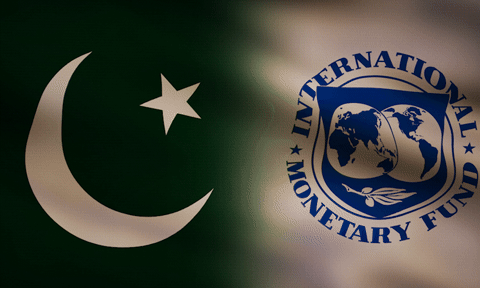EDITORIAL: Domestic pressure is clearly mounting on the Monetary Policy Committee scheduled to meet on June 10 to lower the policy rate from the 22 percent on the back of a Consumer Price Index (CPI) of 11.8 percent and core inflation of 12.3 percent for May.
It is relevant to note that in the 2019 Extended Fund Facility (EFF) programme the government’s economic team agreed to the International Monetary Fund’s (IMF’s) condition to link the rate to the CPI, which was a first in the country’s history as it includes imported items that are subject to external factors and the prevailing rupee-dollar parity and not core inflation, non-food and non-energy, which till that time had determined the discount rate.
It is therefore baffling that the CPI and policy rate differential is an untenable 10.2 percent and with core inflation it is at 9.7 percent. This is the legitimate reason why domestic pressure is building up to reduce the discount rate to within 5 percent of the CPI or the core inflation.
The Fund, however, has been insistent on achieving a positive real interest rate as a means to reduce inflation further. While the Pakistan Bureau of Statistics (PBS) has projected a dramatic decline in CPI and core inflation during the past two months there is a growing perception amongst independent economists that this may have been a deliberate attempt to generate optimism in the market.
What the stakeholders failed to consider is that the feel good factor amongst the general public associated with an understated calculation is not possible as the rupee erosion continues from one week to the next with the private sector salaries frozen for the past three to four years due to factory closures and low growth rate.
In addition, a high policy rate accounts for a dramatic decline in credit to the private sector, mainly large scale manufacturing sector with obvious negative repercussions on employment and growth rate; however, the first PDM (Pakistan Democratic Movement) and the Caretaker governments continued to rely on borrowing from the domestic market that upped the debt servicing component of the budget rendering the deficit unsustainable for the fourth consecutive year – a highly inflationary policy.
It is important to note that last month was the first time in the past year that CPI registered (i) less than core inflation which implies that imported inflation is lower than inflation fueled domestically.
This may be indicative of the fact that the policy to control imports, a major contributor to shrinking current account deficit, is at play; and (ii) less than a percentage differential between CPI and core inflation. This could reflect taxes, read indirect sales tax whose incidence on the poor is greater than on the rich, are impacting on inflation a lot more than the policy rate.
The monetary policy committee (MPC) chaired by the Governor State Bank of Pakistan has, unlike the Finance Ministry, never challenged Fund conditionality pertaining to the policy rate during all the previous twenty-three programmes.
And the reasoning is that this time with the country poised to seek another Fund programme effective the first of next fiscal year the MPC may at best tweak the rate and not bring it all the way down to reflect the dramatic decline in inflation.
It will depend on the capacity of the economic team leaders to convince the Fund that there is a need to do more than just tweak the policy rate; however, at present, there appears little leverage of the team leaders to renegotiate on any condition and in this context one would be compelled to conclude that the MPC would perhaps make a similar claim as it did in its 29 April 2024 statement: “the Committee views inflation to continue to remain on downward trajectory.
However, the Committee also noted that this inflation outlook is susceptible to risks emanating from the recent global oil price volatility along with bottoming out of other commodity prices; potential inflationary impact of resolution of circular debt in the energy sector; and tax rate-driven fiscal consolidation going forward.“
Copyright Business Recorder, 2024





















Comments
Comments are closed.